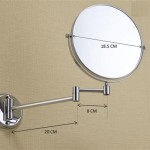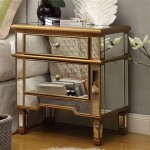Achieving a Gold Spray Paint Mirror Finish: Techniques and Considerations
The application of gold spray paint to achieve a mirror finish represents a challenging yet rewarding project. The allure of a reflective, gold surface stems from its aesthetic appeal, evoking connotations of luxury and sophistication. Success in this endeavor hinges on a thorough understanding of the necessary materials, meticulous preparation, and precise application techniques. This article will delve into the key aspects of achieving a gold spray paint mirror finish, outlining the essential steps and considerations for producing a professional-quality result.
Understanding the Characteristics of Gold Mirror Finish Paints
Gold mirror finish paints, unlike standard gold paints, are specifically formulated to create a highly reflective surface. These paints often incorporate metallic pigments or finely ground metal particles suspended in a clear binder. The arrangement and alignment of these particles on the painted surface are crucial for achieving the mirror effect. Conventional gold paints typically contain larger, less uniformly distributed pigments, resulting in a matte or satin sheen rather than a mirror-like reflection. The binder used in mirror finish paints is also formulated to dry smoothly and evenly, minimizing surface imperfections that could disrupt the reflection. Furthermore, some gold mirror finish paints may incorporate chemical additives to enhance reflectivity and durability.
The reflective properties of gold mirror finish paint are primarily determined by the size and concentration of the metallic particles within the paint. Smaller particle sizes and higher concentrations tend to produce a more reflective surface. However, an excessive concentration of metallic particles can make the paint more prone to clumping and streaking during application. The type of metal used in the pigment also affects the color and reflectivity of the finish. For instance, paints incorporating copper or bronze may exhibit a warmer, more reddish-gold hue, while those containing aluminum may appear brighter and more silver-like.
When selecting a gold mirror finish paint, it is important to consider its compatibility with the substrate material. Some paints are formulated for use on specific surfaces, such as metal, plastic, or wood. Using an incompatible paint can result in poor adhesion, premature wear, and an unsatisfactory finish. Additionally, the paint's resistance to environmental factors, such as UV radiation and moisture, should be evaluated, especially for outdoor applications. Look for paints that are specifically formulated to resist fading, cracking, and peeling when exposed to sunlight and humidity.
Preparation is Paramount: Surface Preparation and Priming
Achieving a gold spray paint mirror finish is heavily dependent on the quality of the surface preparation. Any imperfections present on the substrate will be magnified by the reflective properties of the paint, resulting in an uneven and unsatisfactory finish. The surface must be meticulously cleaned, sanded, and primed before applying the gold mirror finish paint. This process ensures optimal adhesion, smoothness, and reflectivity.
The first step in surface preparation is cleaning the substrate to remove any dirt, grease, oil, or other contaminants. A degreaser or mild detergent can be used for this purpose, followed by a thorough rinsing with clean water. For surfaces that are heavily contaminated, a solvent-based cleaner may be necessary. After cleaning, the surface should be allowed to dry completely before proceeding to the next step. This prevents the paint from adhering poorly and causing blistering or peeling.
Sanding is critical for creating a smooth and even surface. Start with a coarse grit sandpaper to remove any existing imperfections, such as scratches, dents, or rust. Gradually progress to finer grits of sandpaper to eliminate any sanding marks and achieve a perfectly smooth surface. The final sanding should be done with a very fine grit sandpaper, such as 400-grit or higher. It is important to sand evenly across the entire surface, paying particular attention to edges and corners. After sanding, remove all sanding dust with a tack cloth or a vacuum cleaner.
Priming is an essential step in achieving a gold spray paint mirror finish. The primer acts as a base coat, providing a smooth and even surface for the gold paint to adhere to. Choose a primer that is specifically designed for use with the substrate material. Apply the primer in thin, even coats, allowing each coat to dry completely before applying the next. Sand the primer lightly with a fine-grit sandpaper to remove any imperfections. A specialized primer designed for metallic paints is often recommended, as they enhance the reflective properties of the topcoat.
The color of the primer can also impact the final appearance of the gold mirror finish. A grey or black primer is often preferred, as it can enhance the depth and richness of the gold color. A white primer can make the gold appear brighter and more reflective. Experimentation with different primer colors may be necessary to achieve the desired aesthetic. It is important to apply multiple thin layers of primer, allowing each layer to fully dry before applying the next. This builds a uniformly smooth base, thereby increasing the quality of the top gold finish.
Application Techniques: Spraying for Optimal Reflectivity
The application technique is crucial for achieving a gold spray paint mirror finish. Proper spraying technique ensures an even distribution of the paint, minimizing streaks, drips, and other imperfections that could detract from the reflective quality. This involves maintaining the right distance, overlapping passes, and controlling the spray pattern. Mastering these techniques is essential for achieving a professional-quality mirror finish.
Before spraying, it is essential to shake the paint can thoroughly for several minutes to ensure the pigments are evenly dispersed. This prevents the paint from spraying unevenly or producing a blotchy finish. It is also advisable to test the spray pattern on a piece of scrap material before applying it to the actual substrate. This allows the user to adjust the spray nozzle and practice the spraying technique.
Hold the spray can at a consistent distance from the surface, typically around 10-12 inches. This distance may vary depending on the specific paint and the desired effect. Maintaining a consistent distance is crucial for achieving an even coat of paint. Spray in smooth, even strokes, overlapping each pass by about 50%. This ensures that the entire surface is covered evenly and prevents the formation of streaks or light spots. Avoid spraying too much paint in one area, as this can lead to runs and drips.
Apply several thin coats of paint rather than one thick coat. This is critical for achieving a smooth, reflective finish. Allow each coat to dry completely before applying the next. Lightly sand each coat with a very fine-grit sandpaper to remove any imperfections. This helps to create a perfectly smooth surface for the final coat of paint. Multiple thin coats allow for the metallic particles to align better, creating a more uniform reflective surface.
The ambient temperature and humidity can also affect the drying time and the final finish of the paint. Avoid spraying in extreme temperatures or high humidity, as this can cause the paint to dry too quickly or too slowly, resulting in an uneven finish. The ideal temperature for spraying is typically between 65 and 85 degrees Fahrenheit. Ensure adequate ventilation to prevent the build-up of fumes. A well-ventilated space minimizes the risk of overspray and ensures a safer working environment.
After the final coat of paint has dried completely, consider applying a clear coat to protect the finish and enhance its reflectivity. Choose a clear coat that is specifically designed for use with metallic paints. Apply the clear coat in thin, even coats, following the same spraying techniques as with the gold paint. A clear coat will protect the delicate gold finish from scratches and abrasions, extending the longevity of the mirror effect. It also provides an additional layer of reflectivity, particularly if a gloss clear coat is selected.

Rust Oleum Imagine Mirror Effect Spray Gold Joann

X2 Rust Oleum Mirror Effect Spray Paint Gold Gloss Finish Art And Craft 150ml

Rust Oleum Specialty 6 Oz Gold Mirror Effect Spray Paint 343345 The Home Depot

Rust Oleum Gold Mirror Effect Multi Surface Spray Paint 150ml Diy At B Q

18k Gold Spray Paint Waterproof Mirror Effect 450ml

Shiny Foil Mirror Finish Metallic Effect Gold Decoration Spray Paint Aerosol Can

Rustoleum Mirror Effect In Gold Is Great For Spray Painting A Light Fixture Paint Fixtures Best

Automotive Mirror Effect Gold Metallic Spray Paint China Auto Made In Com

The Gold Spray Paint Test

Answering Which Gold Spray Paint Is Best Chris Loves Julia








